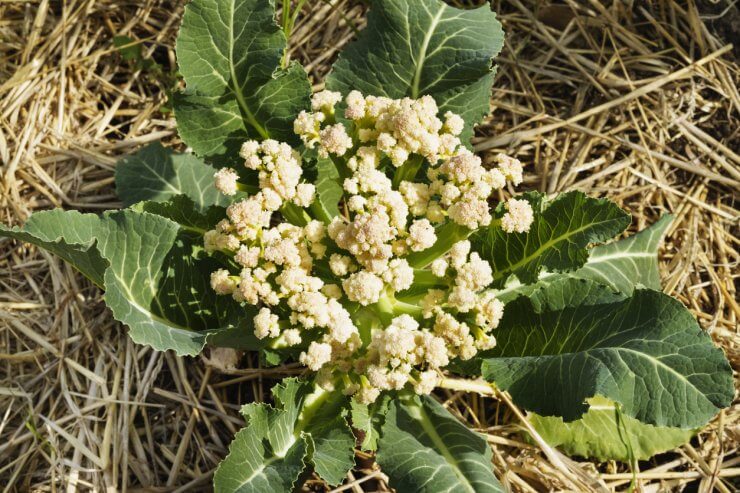
Cauliflower head that has “buttoned”
Above all, growing cauliflower depends on temperature. If you live in a zone where you have two to three months of temperatures averaging in the 60s, specifically 65 to 68 degrees F during the day, you’re in prime growing territory. Everyone else has to work a bit harder, but it is done in zones 2 to 11.
Cauliflower can take a bit of frost, which may cause the leaves to “burn,” but the flower head will continue to grow. Still, a sudden cold snap may cause the plant to “bolt,” or finish its life cycle prematurely and create an inedible crop.
At the same time, a sudden heat wave may cause it to button—separate the flower heads into smaller “buttons” instead of staying in a nice tight head. And because the number of days to maturity for a plant varies from 50 to 100, you want to be careful in selecting a seed packet or a transplant, and choose a variety that matches your average weather.
In warmer climates, plant in the fall for an early spring crop. In colder areas, you can start indoors in early spring, or plant outdoors in late summer for a fall crop, to avoid peak heat or cold.
In early spring, your garden is likely to be in full sun. As trees begin to leaf out, you’ll get some shade, but if not, be prepared to provide your own partial shade with floating row covers. These are lightweight fabric installations that arch over your crop, left open at both ends of the row to allow air circulation.
If, on the other hand, you’ve planted a fall crop, you have to worry about cold snaps. In that case, you want to have row covers of a heavier material that is placed low to the plants and has closed ends, to retain heat. (Be sure to open the ends or remove the cover when temperatures rise again.)
- Bonus: In addition to temperature control, row covers help deter unwanted pests!
Have you used row covers to regulate temperatures around cauliflower? Tell us how that worked for you.


 Previous
Previous

